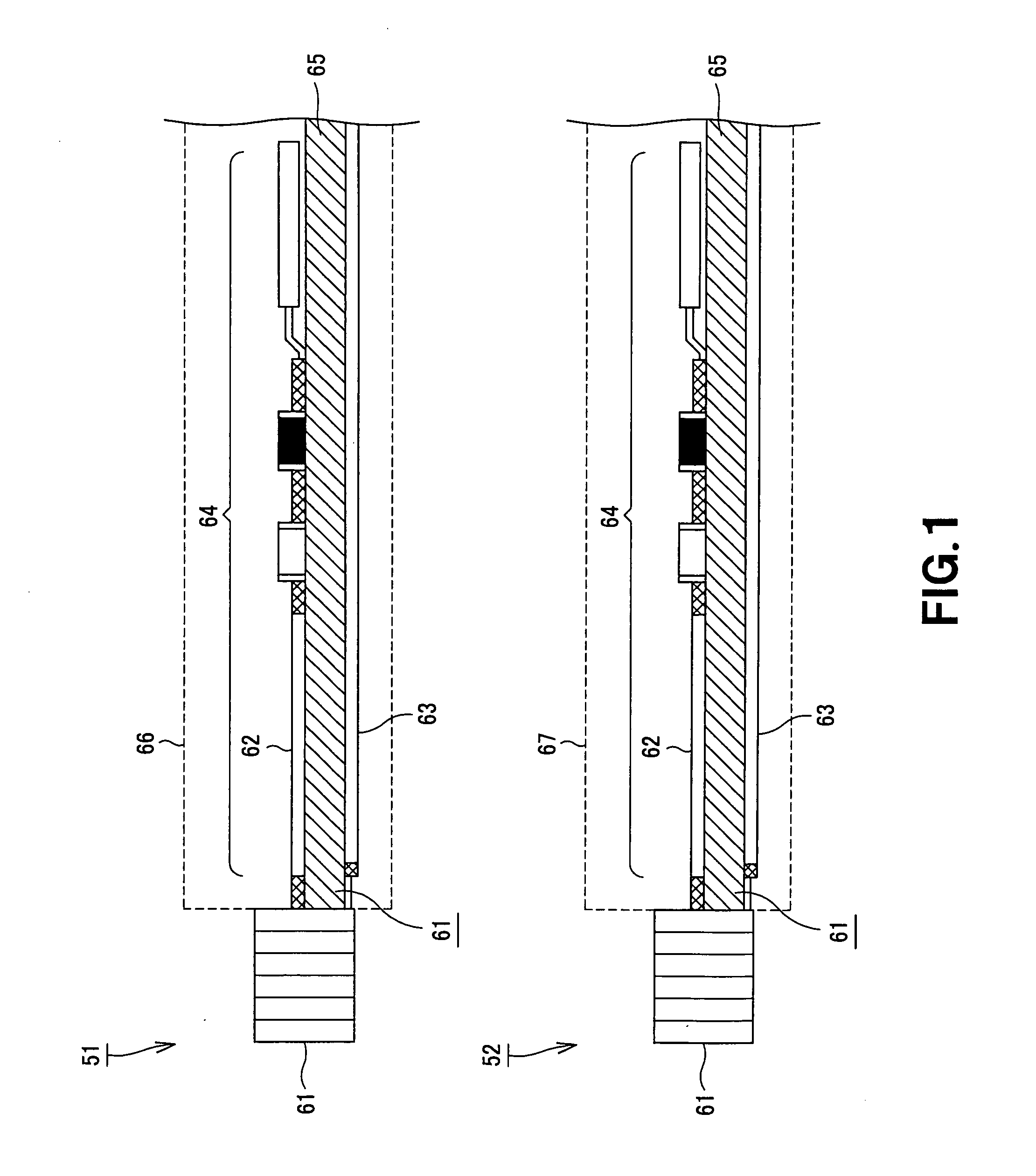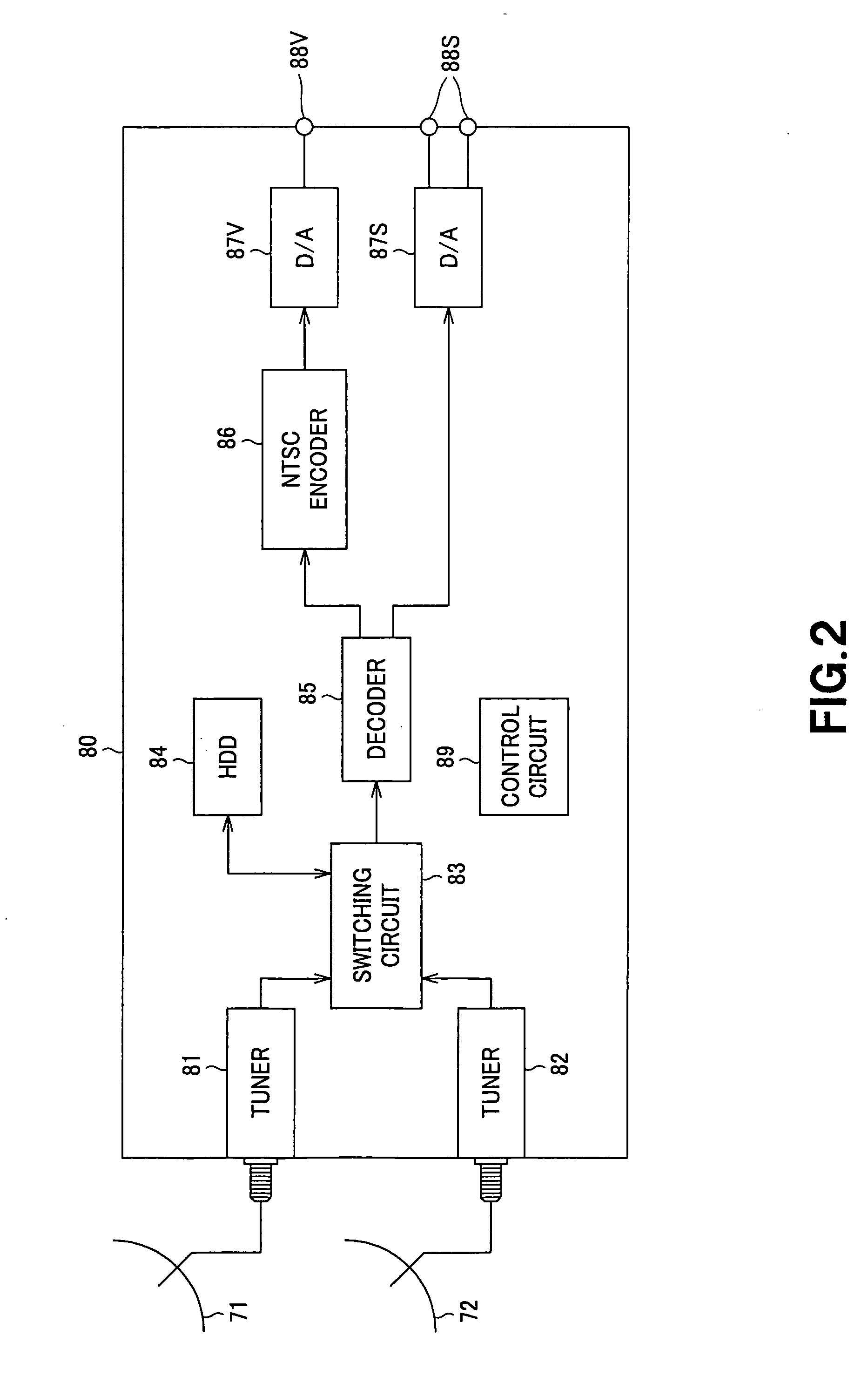Signal reception device, signal reception circuit, and reception device
a signal reception and signal technology, applied in the direction of high frequency circuit adaptation, color signal processing circuit, television system, etc., can solve the problems of mutual interference in the high frequency range, serious electromagnetic interference, and insufficient space between the tuners in many cases, so as to reduce the cost of products, reduce the effect of mutual interference, and reduce the effect of performance degradation
- Summary
- Abstract
- Description
- Claims
- Application Information
AI Technical Summary
Benefits of technology
Problems solved by technology
Method used
Image
Examples
Embodiment Construction
[0051] A tuner circuit and a signal receiving apparatus including the tuner circuit to which the present invention is applied will be described in detail with reference to the accompanying drawings.
[0052]FIG. 5 is a side view showing a base plate of a tuner circuit 1 to which the present invention is applied. The tuner circuit 1 is a circuit board in which circuits for receiving signals are designed, according to a microstripline structure, on a multilayer board. The tuner circuit 1 receives broadcast waves that have been modulated in a predetermined format, and demodulates the received waves. The tuner circuit 1 shown here includes a circuit configuration for receiving, for example, DVB-S (Digital VideoBroadcast-Satellite).
[0053] The tuner circuit 1 includes an input terminal 11 to which a broadcast wave in which a video signal and / or an audio signal are modulated in a predetermined format is input, and a mount layer 13 on which a main circuit 12 for selecting, from the broadcast...
PUM
 Login to View More
Login to View More Abstract
Description
Claims
Application Information
 Login to View More
Login to View More - R&D
- Intellectual Property
- Life Sciences
- Materials
- Tech Scout
- Unparalleled Data Quality
- Higher Quality Content
- 60% Fewer Hallucinations
Browse by: Latest US Patents, China's latest patents, Technical Efficacy Thesaurus, Application Domain, Technology Topic, Popular Technical Reports.
© 2025 PatSnap. All rights reserved.Legal|Privacy policy|Modern Slavery Act Transparency Statement|Sitemap|About US| Contact US: help@patsnap.com



